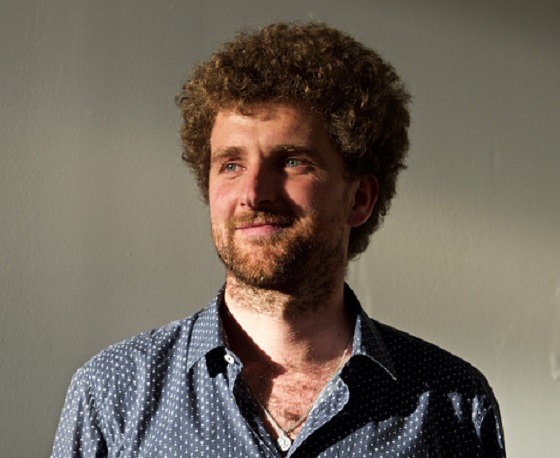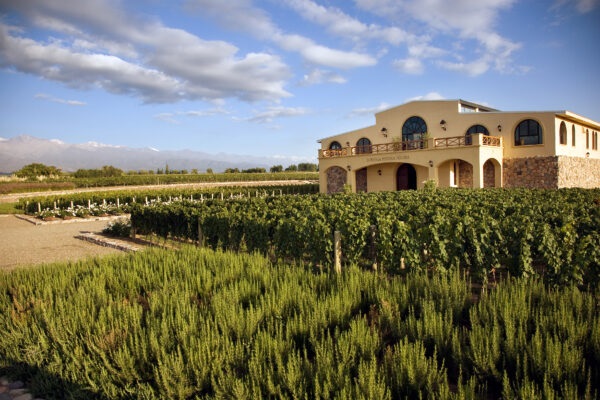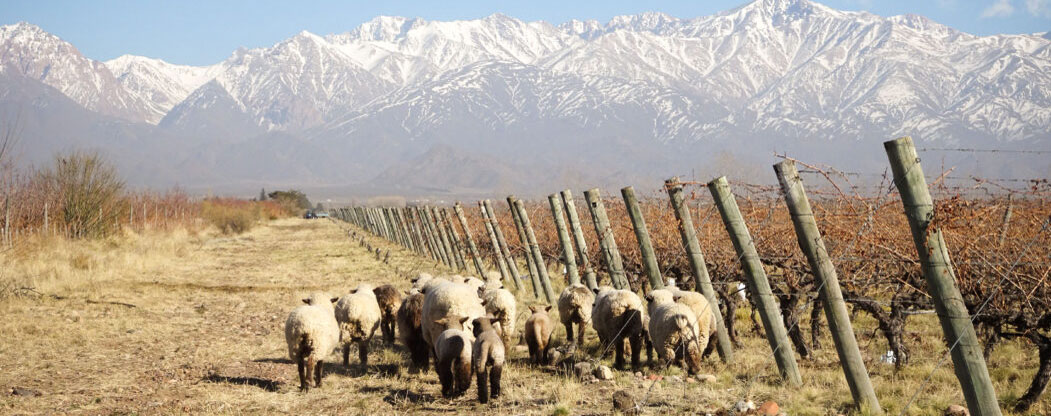- The increasing proportion of the oft-derided Côt grape in the blend (now up to 50%). At the expense of Cabernet Sauvignon (10% when it bowed out of the blend in 2015).
- The increasing use of amphorae for maturing the Côt portion.
- Harvesting up to a month earlier – and not just because of climate change. But because the vines are more mature, because the Frenchmen behind the wine want natural acidity and don’t want to acidify the juice, and because high-density planting increases the pace of ripening.
- The increasing use of organic grapes (certified since 2016).
The sacrifice they are making to produce wines with reduced SO2 levels is the complexity that could come from native yeasts.
Thibault tells me all François Lurton’s Malbecs used to be fermented with native yeasts “but, for us, it was a bit too risky to do no-sulphur-added and native yeasts. We’ve chosen not to add any sulphur but to control the fermentation process through the yeasts that we use”.
This means they will use a ‘killer’ yeast to take out native yeasts and bacteria and then inoculate with another yeast two days later to complete the fermentation.

As Los Chacayes continues to evolve in the coming vintages, Thibault (above) says the next step will be to use selected native yeasts. “This year we sent some musts to a company which is going to develop all the yeasts and we’re going to choose the yeasts that come from our vineyard.”
The one thing about this legendary wine that remains constant is the unique site where the grapes grow – a high-altitude semi-desert with one of the highest density plantings in the world.

François Lurton (above), who produces wines in France, Spain, Portugal, Chile and Argentina, first discovered and recognised the enormous potential of the Uco Valley in the 1990s while working in partnership with Catena. In search of new terroir, François and brother Jacques found what they were looking for in a tract of land called Los Chacayes, in the beautiful foothills of the Andes. With its 1,100m-high elevation, barren soil, challenging continental climate, melting snow and extreme diurnal variation, the Bordeaux winegrowers knew these slopes would yield vibrant grapes of remarkable character – even though, as François puts it, in “this lonely, arid and wind-swept valley… there wasn’t a vine to be seen anywhere”.
But they were ready to take the risk. They began to plant vines, primarily the Argentine flagship variety Malbec, plus its French relative Côt and a little Cabernet Sauvignon, and established their own bodega, Piedra Negra, in Vista Flores in 1996. After their initial success, other winemakers also found their way to the Uco Valley and 15 years after the launch of the first Los Chacayes wine in 2002, the wine brand’s name was lent to the region to gain protected designation of origin status.

Piedra Negra’s portion covers 136ha in total – 112ha of which are in production – but the grapes for the bodega’s top wine come from two plots of just 0.16ha each “which are very special”, according to Thibault. These 0.32ha produce about 4,000 bottles per year.
To the major stress factors of high altitude (1,000-1,450m), low rainfall (200-300mm per annum), and soils that offer the plant minimal reserves of water and nutrients, they heap on another – “competition between the vines”.
The semi-circular plantation in front of the winery – curved to maximise sun exposure – is planted to 20,000 vines per hectare. That’s 1 metre between the rows and 0.5m between the plants.
All the vineyard work, therefore, is done by hand – with a couple of hired horses coming in a couple of times a year for the heavier work while sheep take care of the weeds. They’ve tried mechanical weeding, but the soil is too rocky. “There is no common tool that can work on these soils, they break up after one or two hectares and you have to change the blade,” François says.
About 6ha of the estate, including the 0.32ha that produces Los Chacayes, are farmed according to biodynamic principles but are, so far, only certified organic.
To relieve some of the stress on the vines, yield is reduced to two or three bunches per vine.
“Thanks to the competition, we have earlier harvests,” Thibault tells me.
He says by the third week in March the small berries with tough skins are usually ripe but still have high acidity. “The advantage of harvesting so early is that we keep the natural acidity in the berry whereas ripeness of the tannins is already advanced, so that’s why we have a very good balance between the concentration and the freshness of the acidity.”
Elevating the Côt grape
The other unusual thing about this wine is that it elevates the Côt grape, often considered a more rustic version of Malbec with higher acidity and harsher tannins. “But due to our management of the vineyard (having very few grapes per vine), we manage to tame this rusticity and this component of the blend is very important because it brings even more freshness in the nose and acidity in the mouth,” Thibault says.François adds: “From an ampelographic point of view, it’s very difficult to distinguish them but in an oenological way they have a very different behaviour in the winery. Basically, the Côt is more productive so it has a higher acidity. Nowadays, the Côt doesn’t have a very good press in Argentina but it’s changing because, due to climate change, we are looking for more and more freshness and acidity and less sugar and concentration.”
The official explanation is: “the French grape Côt gives the wine freshness, dynamic tension and vital acidity, while the Argentine Malbec imparts fruit, concentration and depth.”
Because they are so different, the two grapes undergo completely different vinifications. The Malbec berries macerate for 10 days in new oak barriques. There is no pigéage, delestage or remontage during this period – the barrel is simply rolled along the floor five times every 24 hours.
“This kind of extraction is very gentle,” Thibault explains.
Once the must is inoculated, fermentation in the new oak lasts two or three weeks – reaching 14.5-15% alcohol.
The wine is left in contact with the skins for another 15 days. Thibault adds: “We take advantage of the strengths and ripeness of the tannins of the Malbec, leaving it in maceration for almost six weeks.”
François says they first used this technique with the 2007 and 2008 vintages. He believes it makes the Malbec “richer, it has more volume and it takes advantage of all the polysaccharides and tannins of the wood”.
The more sensitive Côt undergoes an even more gentle extraction process. With fermentation in a concrete tank, “we do some pumping over at the beginning, during the first three or four days (when there is little alcohol and the temperature is still low), but then leave it alone until it ferments to dry,” Thibault says. “We don’t need the structure with the Côt, we want to take advantage of the freshness and we know sometimes the tannins can be a little harsh.”
To preserve the freshness and acidity of the Côt, they are now ageing 30-40% of the wine in amphorae for 12-15 months. François points out they are able to use lower levels of SO2 in the amphorae with “fewer problems”.

Thibault believes Côt is “a fantastic wine if you control the yield” and extraction. While they usually use 20 or 30% in other blends with Malbec, last year they launched a Côt varietal in their lower-priced range with no added sulphur. “It’s very interesting because the sulphur is a solvent so when you add in the temperature and alcohol, it extracts some extra tannins from the skins and you are increasing the risk of over-extraction. Since we are working without sulphur in the reds, we have some very good results in extraction with the Côt.”
With the 2021 vintage, they made Los Chacayes without sulphur until the end of fermentation. It’s something they’ve been trialling with their Malbec varietals and Cabernet Sauvignons and now have enough confidence to adopt it for their small-batch top wine.
Thibault says the blending process is relatively easy, once they have rejected any substandard barrels, because they have only two wines to consider. They start with a blend that would use all the available good barrels and tweak it from there.
The result is a powerful and concentrated red wine that nevertheless remains lively, intense and full of character. Much as François and Jacques predicted when they first set eyes on Los Chacayes.













.png)






